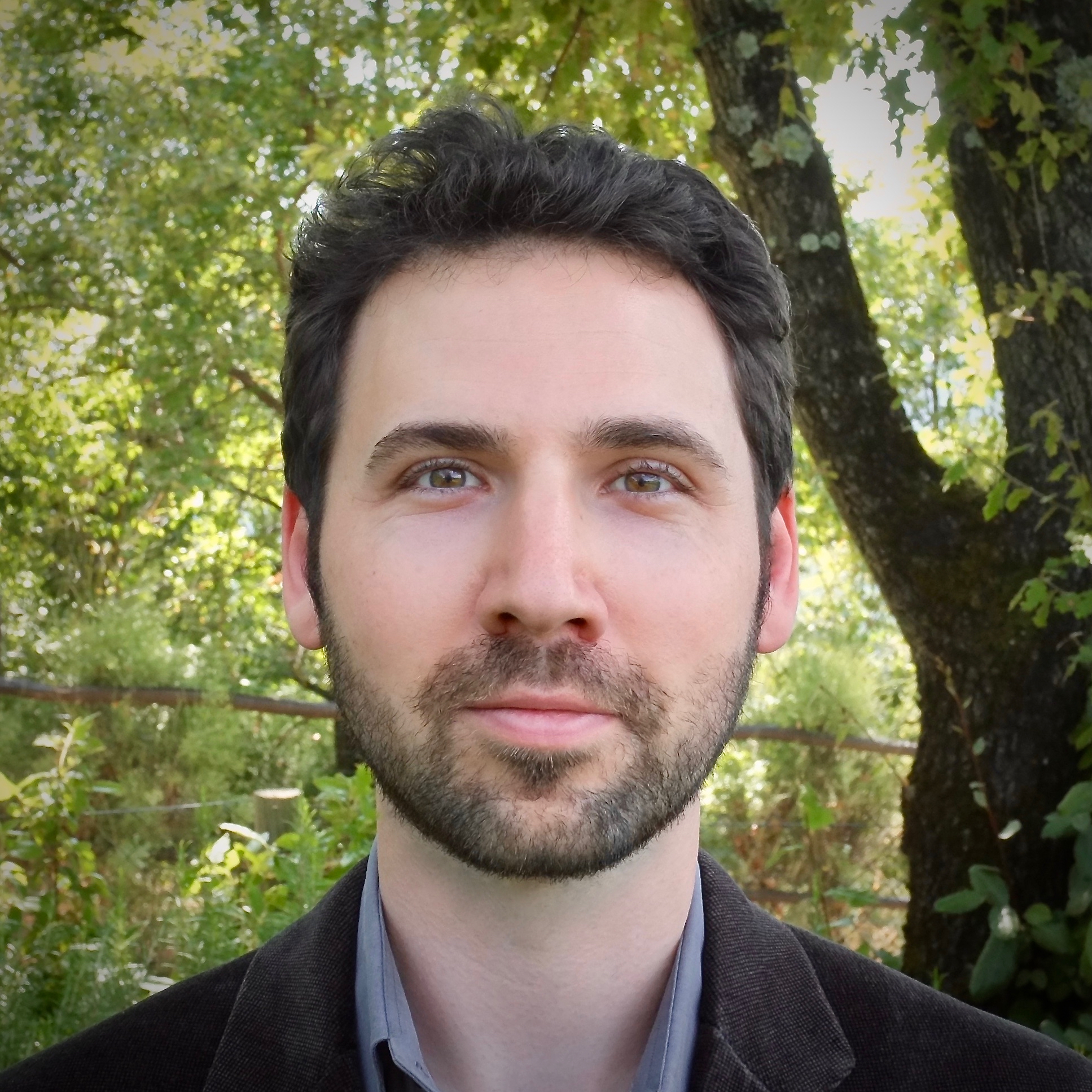Is Fascism on the Rise?: A Conversation With USYD Historian Dr Marco Duranti

At the time of writing, Joe Biden was about to be inaugurated the 46th president of the United States. And tensions were on high in Washington and state capitals over concerns that supporters of outgoing head of state Donald Trump might cause unrest.
These concerns, of course, weren’t unfounded. Over past weeks, there had been reports that Trump supporters were planning on staging armed protests in 50 state capitals. And this was coming on the back of the storming of the Capitol Building in Washington a fortnight ago.
Thousands of Trump supporters forced their way into the seat of US congress on 6 January. The unrest led to five deaths. Insurrectionists had been given the nod of approval by Trump at a pre-coup rally, where he said he’d be joining the mob, prior to going and watching the riot on TV.
While people have been labelling Trump a fascist since he took office, the scenes at Capitol Hill added some credence to this claim.
And despite the changeover, commentators still warn that his mounting right-wing supporter base remains, waiting for an authoritarian leader to stoke the flames once more.
A brief history of fascism
The quintessential fascist ruler is Benito Mussolini. The dictator took control of Italy during a 1922 coup. Mussolini’s two decades of rule involved all the hallmarks of fascism: authoritarianism, extreme violence, ultranationalism, eradication of opposition, all under a “strongman” ruler.
Second in line would be Nazi Germany’s Adolf Hitler, if only because he referred to himself as a National Socialist. And then there was Nationalist dictator Francisco Franco, who lorded it over Spain in an authoritarian manner for near on four decades commencing in the mid-1930s.
Trump has been likened to all these despotic rulers not only because he has enhanced his power by attacking vulnerable minorities and playing on the prejudices of his supporter base, but also because of the erratic behaviour and buffoonery he shared with them.
The thunder down under
Whilst no one has gone as far as to call Scott Morrison a fascist yet, he’s been a keen supporter of the US leader all the way through. Our PM has refused to directly sanction Trump over the Capitol coup, while, last year, as he was in the US, Morrison said the pair share “a lot of the same views”.
Indeed, the prime minister’s politicking has many similarities to Trump’s. These include attacks on foreigners, refugees, Muslims and LGBTIQ communities, with an accompanying disregard for human rights, disapproval of the Black Lives Matter movement and the enactment of rights-eroding laws.
Historical perspective
Dr Marco Duranti is a Sydney University senior lecturer in modern history. The American-born academic has a focus on Europe, and he currently teaches a class on the origins and development of fascism in the early 20th century.
Sydney Criminal Lawyers spoke to Dr Duranti about the similarities Trumpism shares with fascism, as well as other features that make it distinctly American. And he warns as to why he believes a strongman figure is not necessarily a key ingredient if there is an emerging authoritarian US.

Dr Duranti, recent days have seen a lot of references to fascism in relation to the insurrectionists at the US Capitol Building. But the term has long been used in reference to Donald Trump, his tendencies and those of his supporters.
You’re a modern historian, who’s research has had a focus on fascism. So, what are the principles underpinning this political doctrine?
We can think of fascism in a number of ways. We can think of it as a political doctrine, involving a set of characteristics, which are authoritarian, violent and revolutionary, while, at the same time, advocating a counterrevolution against left-wing subversives.
In the context of the first half of the 20th century, it was a movement that appealed to youth. It cast itself as a right-wing, antiestablishment movement: a counterpoint to the left-wing revolutionary forces that emerged at the end of the 18th century, and again at the end of the First World War.
That’s in terms of an ideology. The problem with that is historians have found that fascism was not coherent. It was in fact quite complex, evolving and amorphous.
Benito Mussolini, the former Italian socialist journalist, became the first bona fide fascist. But he didn’t come up with a definition for fascism until the late 1920s, which was years after he’d taken power.
The Nazis went through a number of different political programs. In many respects, Hitler was at odds with the original Nazi intellectuals, who didn’t consider him to be one of them.
The problem when we focus at the level of doctrine is that we arrive at an impasse around the rhetoric and principles of fascist movements, which have adapted to changing political and social contexts.
In many cases, principles were thrown out the window in the name of expediency, particularly when it involved attracting certain groups to the electorate.
Another way to think about fascism is as a social phenomenon, which is rooted in different kinds of material factors and dynamics within societies.
In the case of Italy, the end of the First World War meant deep economic and social crisis. Then there were the wins of the Bolshevik revolution across Europe.
Italy had the Biennio Rosso – the two red years – in which there was a revolt by workers and peasants.
While sparked by the Wall Street crashes at the end of 1929, the Great Depression led to the German case.
Fascism rooted itself with this vague ideology within sectors of society that were being impacted by these developments.
It rooted itself as a movement and, once in power, it was able to forge alliances and manoeuvre in such a way as to appeal to different material interests.
The third way we can think of fascism is as a technique for rule. We often use the word totalitarian, although that’s a very simplistic term because the reality of living under fascist rule was not George Orwell’s 1984.
There were a lot of different reasons these regimes used for mobilising and controlling their populations.
Finally, fascism can be understood as a psychological attribute of leaders and their followers, who often commit heinous acts in the name of one of these regimes.
So, as you’ve said, fascist states first appeared in the early 20th century, with Mussolini’s Italy and Nazi Germany, while many also point to Spain under long-term dictator Francisco Franco as being a fascist society.
Were there similar societal circumstances prior to the rise of these regimes that indicate why these nations were all fertile ground for far-right ultranationalists to take over?
In the case of Italy and Germany, there was collective national trauma emerging from the spasm of mass violence of the First World War.
The war left veterans physically and mentally traumatised. Many of them looked towards the civilian population with resentment and a feeling of alienation.
These soldiers shared a collective solidarity, which made them a fertile group to join the ranks of far-right ultranationalist organisations.
Then there were the economic impacts of the war, which were devastating, along with the impacts of the Bolshevik revolution in Russia.
The collective national trauma, along with individual traumas, was key to the shift in ideologies.
In Italy, after the First World War, there was a moment when the left had a majority of parliamentary votes in the 1919 elections: the first election with universal suffrage. The socialist party and the Catholic left-wing farmers’ party had the majority of seats in parliament. And they were antiestablishment.
The election was followed by a series of uprisings in which workers took over factories and farmers occupied the fields. There was a revolt against industrialists and the elite in general.
The response by the liberal establishment in Italy was to wait out the situation and let it dissipate, which it did.
But this alienated the landowners, the various economic elites, elements within the church, the military, the police, as well as the political establishment. And this allowed them to more openly endorse the fascist movement and its violence.
In Germany, you had a period of destabilisation after the war similar to that in Italy, but then the situation stabilised. The economy improved. And the Allies agreed to more lenient terms of reparations.
This period saw the Nazis and other right-wing movements go into abeyance, but then remerge after the Great Depression.
These economic circumstances were caused by the war and capitalism. The existing elites were also terrified about what had happened in Russia.
So, while their first choice was not fascism, they did turn to it when they believed they were in danger from socialist revolutionary elements.
In the case of Spain, there was the civil war. It was similar in terms of an extremely violent upheaval. And there was an alliance between a traditional authoritarian, Catholic figure like Franco and a movement that took a lot of its cues from the Italians and Germans.
There were transnational links between all these movements. But, again, there were also a lot of differences between them and also rivalries.
People have been using the term fascist in relation to Trump since he first took office. The 6 January’s short-lived takeover of the Capitol Building has been described as “Trump’s fascist coup” and the right-wing participants have been called a “fascist mob”.
Would you say there are elements within American society today that are similar to those seen in the fascist societies of the early 20th century?
Comparative history is always helpful. And when you do comparisons, it’s not just similarities you look at but also differences.
Historians are very attentive to the unique features of any context of a particular time and place. And we are loathe to try to blur the differences between two cases.
So, when talking about fascism in the United States, we have to be careful.
The problem with using the term fascist is not only has it become a generalised polemical term, but it also has a lot of legal and political connotations.
During the Cold War, the Eastern Bloc would label any group fascist if they wanted to target them and infringe on their rights. The term fascist was used in a similar broad way to how terrorist is used today.
The other problem with using the term fascist in the context of the US, is that it has a tendency of obscuring the American roots of the phenomenon of Trumpism and what we’re seeing now in the terms of the rise in right-wing extremist groups.
In using fascism, it’s like seeing Trump, Trumpism or white supremacy as a foreign import, rather than something that’s very much American.
There’s another issue with calling groups fascist, as you don’t want to absolve the existing establishment or mainstream political parties of guilt and responsibility for the undermining of democracy and human rights.
But, in having said all that, there are similarities between the rhetoric of Donald Trump and his performances with those of earlier fascist leaders.
And there are a lot of similarities between the rhetoric of his followers and those of earlier fascists.
Although, there are also a lot of features of these groups that are particularly American. Going back to the middle of the 20th century, you can find these features.
Donald Trump hearkens back in his rhetoric to the right-wing isolationism of the interwar period in the US, and America First, which was Charles Lindbergh’s slogan.
Trump also hearkens back to Richard Nixon’s rhetoric about the silent majority. So, these are not fascist features.
Journalist Chris Hedges has been warning of a rise in Christian fascism in the US for a decade now. And a lot of these right-wing Christians make up Donald Trump’s supporter base. Where does this movement spring from?
The evangelical Christians in the United States as a voting bloc – a political powerhouse – emerged first in the Democratic Party in the late 1970s with Jimmy Carter. He was an evangelical Christian from Georgia. And then they switched to Ronald Regan in the 1980s.
The 1990s were defined by culture wars over US history. There are a lot of similarities to what you have seen in Australia, with questions about family, character and family values.
The evangelical Christians are there as a voting bloc. Republicans and Democrats have mobilised voters with arguments over abortion, particularly around Supreme Court battles.
A general feature of conservatism throughout the west is a nostalgic look back at the idealised civilisation: a Christian civilisation, where people abided by Christian values.
This is a very common theme, and not just for conservatives. This romanticised vision of returning your country to an earlier period, where people were abiding by these Christian norms.
Are these Christians groups those that adhere to the prosperity gospel?
The US has some unique features. The prosperity gospel being one of them. A gospel of that form doesn’t exist in Europe.
Donald Trump is an antiestablishment figure. He is a plutocratic populist. And his own personal success and wealth is part of the whole heroic mythologising of him as a charismatic leader.
But German sociologist Max Weber talked about the emergence in Europe of Protestantism and capitalism being coterminous and distinguishing itself from Catholicism as it emphasised success and personal wealth.
After the Second World War, Europe saw political Catholicism emerge and Christian democracy became a major political movement.
There were also right-wing Catholic intellectuals from the early to mid-twentieth century, some of whom align themselves with fascism.
In Europe, political Catholicism is much more communitarian and collectivist than individualistic. It stresses the individual embedded within different communities: the family, the church, civil society.
Catholicism in Europe tended to be more anti-capitalist and anti-socialist, which is a direct parallel with fascism.
And lastly, whilst Trump is on the way out, many warn that his supporter base could rally around another comparable leader.
In your opinion, Dr Duranti, are the circumstances in the United States in such a condition that the country may be susceptible to an authoritarian form of governance taking power?
If we look at the powers that have been given to the state, the system in the US already has a lot of authoritarian features, while still being a nominally liberal system.
There are comparisons to be made in Australia, in terms of powers to surveil and control the population, particularly after the aftermath of the September 11 attacks.
I’m not going to say that the United States is an authoritarian state. But you don’t need a fascist leader in order to have a state in which many people – particularly those in vulnerable and disenfranchised groups – can be targeted and have their rights abrogated.
Trump, as a personality, was never someone particularly given over to totalitarianism. He was someone who was very ready to use police and the military, but he wasn’t that 1984 figure.
Trump spent a lot of his presidency in a very weakened position fighting off various investigations and complaining about CIA and FBI powers. He was a little bit like Berlusconi in that sense.
Maybe you’ll have somebody in power in the United States in the future who has less of an anarchic personality than Trump.
But my fear is more that the institutions within a democratic country can take on a lot of authoritarian features and they can do so either gradually without us noticing, or in particular moments of crisis and trauma, like after September 11 or what is happening now.
There can be a lot of powers that are given to the state during a crisis that are not so easily disposed of when the crisis is averted.







